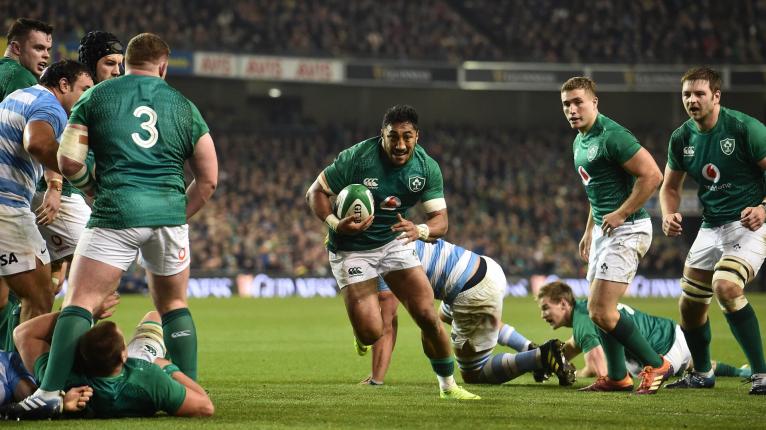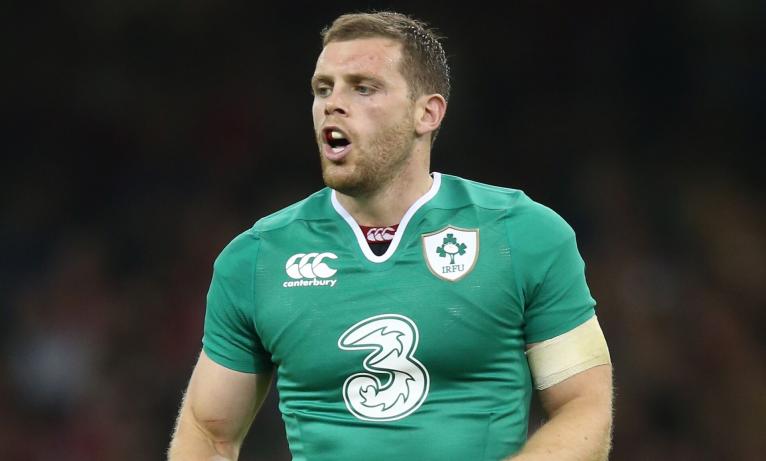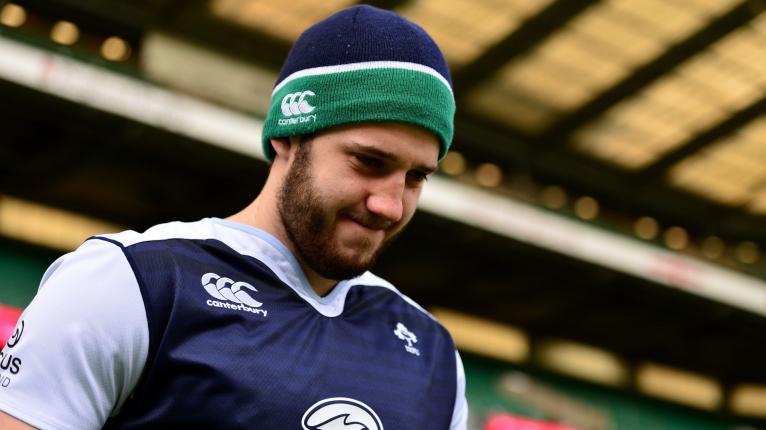After 26 different combinations, this is Ireland's last area of positional uncertainty under Schmidt

There was no visible pre-match panic at Lansdowne Road last Saturday when Ireland were forced to rejig their team selection at the 11th hour.
Joe Schmidt and co are used to these hurried last-minute reshuffles. Only 20 months ago they had to promote Peter O’Mahony off the bench just before the start versus Grand Slam-chasing England.
Jamie Heaslip’s late injury should have unsettled them. Best laid plans should have been disrupted. Instead, they took the mishap in their stride, O’Mahony gobbling up the opportunity with a masterclass performance that within a few months took him all the way to Lions first Test captaincy.
That was why when Robbie Henshaw pulled up lame with a damaged hamstring during last weekend’s pre-match warm-up, there was no major loss of focus. Ireland had taken precaution.
Twenty-fifth man Will Addison had been tackle-bagging on the pitch along with fellow extra reserve Finlay Bealham, so sudden promotion into the No13 shirt didn’t cause any vivid consternation.
Watch: Joe Schmidt after Ireland’s victory over Argentina
Not having any time for nerves to kick in, the rookie, who had only made his Test debut off the bench the previous weekend against Italy in Chicago, simply got on with it.
He didn’t woundingly leave Schmidt down. But, similar to the fortunes of multiple other players who have temporarily featured in the Irish midfield these past five years, he didn’t shine much either.
With Garry Ringrose now due back in the mix to face the All Blacks next Saturday, this experimental Bundee Aki/Addison axis might not be seen again, just like so many of their preceding one-off combinations which failed to cut an impressionable dash.
Settled and trusted centre partnerships have curiously been the exception rather than the rule during Schmidt’s 60-Test reign.
Sixteen players have been called on to make up a whopping 26 different midfield combinations, a game of musical chairs in which 18 of these partnerships (69.2%) have only ever been trialled once by the demanding coach.

Schmidt had initially relished the late-career inheritance he received with the long-established duo, Brian O’Driscoll and Gordon D’Arcy, starting together seven times in his first season.
That alliance culminated in that memorable Six Nations title-clinching win away to France in Paris. But the search for a combination since then to stand a similarly lengthy test of time has been exhaustive and constantly reassessed.
You just don’t get much of a window to impress the all-seeing Irish rugby headmaster. Duos such as Luke Marshall/Darren Cave, Cave/Fergus McFadden, D’Arcy/Jared Payne, Henshaw/Luke Fitzgerald, Stuart McCloskey/Henshaw, Stuart Olding/Marshall, Rory Scannell/Garry Ringrose and McCloskey/Chris Farrell are just eight of the 18 of the partnerships given a never repeated one-off run together.
The level of upheaval sticks out like the proverbial sore thumb when compared to the other two-man sectors in the Irish starting team.

Schmidt has used just 13 players in making up 17 different second row partnerships. Only five of those duos were a once-off combination (29.4%). He has also picked only 10 players to make up 14 different half-back partnerships. Seven of those combos were used just the once (50%). Those are figures that shine a what-the-hell-is-happening light on the busier midfield merry-go-round.
Schmidt thought he might have solved the post-O’Driscoll/D’Arcy riddle in November 2014, the residency qualification of Payne, another fellow Kiwi, nudging him into trying out a manufactured midfield with the Ulster full-back at 13 outside Henshaw.
In doing so, a balance was struck. Payne didn’t offer the same range of attacking threat he wielded provincially from 15, but what he brought to the Test midfield was defensive solidity borne out by him missing just 17 tackles in his 17 midfield starts.
Henshaw/Payne was central to Ireland’s successful Six Nations title defence in 2015, but injuries scuppered Schmidt’s World Cup plans, the duo failing to appear even once together in that five-match campaign.
The coach used seven different partnerships in seven consecutive matches that August/September before Henshaw saw out the disappointing World Cup with Keith Earls running the channel outside him.

Still, the Henshaw/Payne partnership went on to start 13 games together in total, becoming Schmidt’s most used duo before Payne’s injury-enforced retirement was confirmed last spring amid another spell of midfield alterations.
None of the three centres that started in USA and Japan in June 2017 – Luke Marshall, Ringrose and Rory Scannell – had made the following November squad, one injured and two deemed not in good enough form for a series that Schmidt entered into with an attitude change towards Henshaw.
Despite serving his apprenticeship at outside centre under the trophy-winning Pat Lam at Connacht, Schmidt had rarely used Henshaw in the No13 role at Test level. However, Aki’s qualification to represent Ireland under the residency rule prompted the rethink that saw Henshaw start at outside centre against South Africa for just the fifth time in what was at that time his 27th start under Schmidt.
Henshaw enjoys this less claustrophobic wider channel. ‘I enjoy playing both (midfield positions), you should be able to play both. There is a lot more space off second phase (in attack at 13) and a lot more defensive ownership in the wider channels as there is a lot more happening out there.
‘You’re presented with a lot of wider runners. You have the 15 running, the blindside wing running out the back, things like that, so there’s a lot of different pictures being presented.’
The hope was Aki/Henshaw would comfortably reprise the provincial partnership that had backboned Connacht until Henshaw’s summer 2016 switch to Leinster. But a year on from that baptismal outing against the Boks, midfield selection remains a movable feast.
Aki has filled the No12 jersey in 11 of Ireland’s last 13 matches, but attempts to build partnerships have been thwarted by injury. Henshaw and Ringrose have both succumbed to serious problems at different stages. So, too, rookie Chris Farrell who was parachuted into the Six Nations mix only to disappeared just as quickly again with injury.
Following Henshaw’s latest ailment last weekend, the Aki/Henshaw combination has only started five Test matches together. Aki’s relationship with Ringrose, whom he will likely pair with if both are fit, extends to just three games, while there has also been auditions with Farrell (twice) and Addison (once).
This ever-changing picture could potentially become a World Cup concern. After years of constantly rolling the midfield dice, Schmidt doesn’t have the time left to continue trying out experimental partnerships.
Heading to the finals in Japan with the aim of creating history through progress to a first ever semi-final, Ireland will want their main midfield duos to be well-versed and in synch as much as possible. So far, though, establishing that reliability is proving a tougher build compared to other areas of his team.
SHIFTING MIDDLE GROUND
Joe Schmidt has used 16 players to make up 26 different midfield partnerships in his 60 Ireland matches. Just eight partnerships were granted a second audition, 18 combinations were only ever trialled once by the coach.
13 starts: Henshaw/Payne;
7: D’Arcy/O’Driscoll;
6: Henshaw/Ringrose;
5: Aki/Henshaw;
3: Henshaw/Earls, Marshall/Ringrose, Aki/Ringrose;
2: Aki/Farrell;
1: Marshall/O’Driscoll, Marshall/Cave, Cave/McFadden, D’Arcy/Cave, D’Arcy/Henshaw, Cave/Earls, D’Arcy/Payne, Henshaw/Fitzgerald, Fitzgerald/Payne, Cave/Payne, McCloskey/Henshaw, Marshall/Henshaw, Olding/Henshaw, Olding/Marshall, Ringrose/Payne, Scannell/Ringrose, McCloskey/Farrell, Aki/Addison.
THE 12 SHIRT (10 players) : 23 starts – Henshaw; 11- Aki; 10 – D’Arcy; 6 – Marshall; 3 – Cave; 2 – McCloskey; 2 – Olding; 1 – Fitzgerald, Ringrose, Scannell.
THE 13 SHIRT (11 players) : 17 starts – Payne; 13 – Ringrose; 9 – Henshaw; 8 – O’Driscoll; 4 – Earls; 3 – Farrell; 2 – Cave; 1 – McFadden, Fitzgerald, Marshall, Addison.
































































